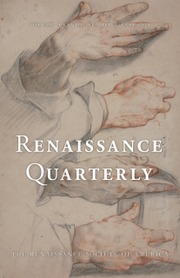Few paintings of the early modern period have generated such a vast library of interpretations as Hieronymus Bosch’s enigmatic Garden of Earthly Delights (Madrid, Prado, signed but not dated). Though one might wish for a moratorium on publications about it, with more attention given to every other picture by Bosch, this is intelligent, fresh rethinking about the painting by a thoughtful senior scholar, Margaret Carroll, professor emerita from Wellesley College and author of Painting and Politics in Northern Europe (2008). This Bosch study nicely fills a gap in that volume, which ranges from Van Eyck to Bruegel and Rubens.
Carroll reads the triptych as emerging from a culture of encyclopedic curiosity and wonder, based on late medieval natural philosophers rather than from the usual religious framework of deep spiritual pessimism about the fallen human condition. For her, Bosch lays out human history as a universal, cosmic history of the world’s past and future. Hans Belting’s 2002 reading of the Garden as a utopia—a counterfactual of humanity without the tragedy of original sin—responds so positively to this Bosch work (like Jean Wirth’s, in the same year). Carroll also interprets the image as representing how primordial humanity “felt and behaved before and after the encroachment of civilization” (2). This claim recalls—in reverse—the roughly contemporary Florentine imagery of evolving humanity up from primitivism on successive canvases by Piero di Cosimo, as interpreted by Erwin Panofsky (Studies in Iconology [1939]) and more recently associated with Lucretius and materialism by Alison Brown (I Tatti Studies [2001]: 11–62).
Like other observers, Carroll also observes that Bosch strove to paint temporal change, plus transmutations of matter, even from one panel to the next. An initial chapter lays out the biography of Bosch in his namesake city as well as what we know about his elite patrons. Additionally, she links him to leading late medieval court manuscripts with encyclopedic imagery, a source for some of his wondrous, exotic animal representations. The following sequence of chapters traces stages of earthly transformation, from the exterior image of creation itself across a vigorously fecund Eden but along a gradual loss of vigor and heat across the interior panels. Bosch’s chilly hell scene is viewed as apocalyptic decline, redolent of a “fractured image of contemporary life around 1500,” the ominous half-millennium (4). Carroll posits the disporting appetites and interspecies connections of the central panel as visual meditations on the boundaries between sexes (and races, since Black people also inhabit this world) as well as between human and animal natures. Like Reindert Falkenburg in the 2022 Budapest Bosch catalogue, she imagines the triptych as a grand courtly conversation piece.
When E. D. Hirsch’s Validity in Interpretation (1967) strove for rigorous interpretations, based on proper first determination of a given genre, and Ernst Gombrich warned about “Aims and Limits of Iconology,” (Symbolic Images [1972]), both scholars pointed out dangers—as well as rewards—of first premises, what Gombrich calls “our prior conviction of what we may look for, in other words, on our feeling for what is not possible within a given period or milieu” (7). Carroll does ground her interpretation on both visual and verbal evidence, especially the courtly manuscripts of chapter 1, but she bases her claims on Bosch’s assumed fundamental basis in curiosity, itself often condemned as pride filled in much medieval thought (Edward Peters, “The Desire to Know the Secrets of the World,” Journal of the History of Ideas [2001]: 593–610).
Even to define the genre of this painting defies certainty. Though a triptych, and thus usually associated with altarpieces, it resided in a courtly residence rather than a church; however, it is also framed by biblical creation and an apocalyptic hell. Ultimately, our acceptance of Carroll’s views here as valid depends on whether we regard Bosch during this moment of transition as either a last vestige of the late Middle Ages or, with Carroll, as the harbinger of the early modern, as portrayed by Lorraine Daston and Katharine Park (Wonders and the Order of Nature [1998]).
Yale University Press has done a lovely job of presenting this essay with high quality images, including significant details. In addition, Carroll’s thorough knowledge of previous literature in her bibliography will enable readers to pursue other readings of the picture. If this provocative new essay raises new insights to aspects of the picture, it cannot be the final word on the Garden. Yet Carroll is surely correct to observe that our varied responses to this work stem from Bosch’s “engaging the viewer in an experience of wondering and wandering” (12).



